
How can digital businesses make their content work better for their customers, users, or audiences and their own business goals? That’s a question we think about often at Content Science.
To answer it, we use our ContentWRX software to study six dimensions of content effectiveness. Two dimensions that have a strong effect on your overall effectiveness are content relevance and content usefulness. Aligning your content with the specific needs and interests of your customers and audiences has tremendous consequences for your digital business or organization.
In this article, we share our insights based on content feedback from more than 100,000 people collected through ContentWRX. We also offer four high-impact ways to ensure that content relevance and usefulness can improve your digital business.
How Content Relevance and Content Usefulness Affect Your Digital Business
Digital business is all about nurturing a long-term relationship with your customers, and content is the mediator of that relationship. It doesn’t matter if you’re interacting with users who have never heard of you via your marketing content, providing them with useful content to prove your expertise, or resolving their issues with your support content. Making sure your content directly reflects and speaks to their specific needs is of utmost importance to building their trust in you.
Before we dive into the facts and figures, let’s talk about what we mean by content relevance and content usefulness. Content relevance is all about your audience’s perception of your content’s pertinence to topics, issues, needs, or interests. Content usefulness refers to your content’s ability to help users make decisions or make progress toward goals. Whenever a user visits your content, they have a specific goal in mind — even if that goal is just to learn more about you. How well your content helps them accomplish that goal is hugely important to how effective your content is overall. We recently conducted a special analysis to understand the relationship of content relevance, usefulness, and other dimensions of content effectiveness. We noticed some clear patterns.
Insight 1: Content Relevance Makes or Breaks Goal Completion
Customers and audiences who perceived the content they used as relevant are
- Nearly three times as likely to report accomplishing their goals than users who felt the content was only somewhat relevant
- More than eight times as likely to report accomplishing their goals than users who felt the content was not relevant
You can see the exact breakdown in the graph below. Customers and audiences who use content that is irrelevant to their goals are much less likely to complete them.
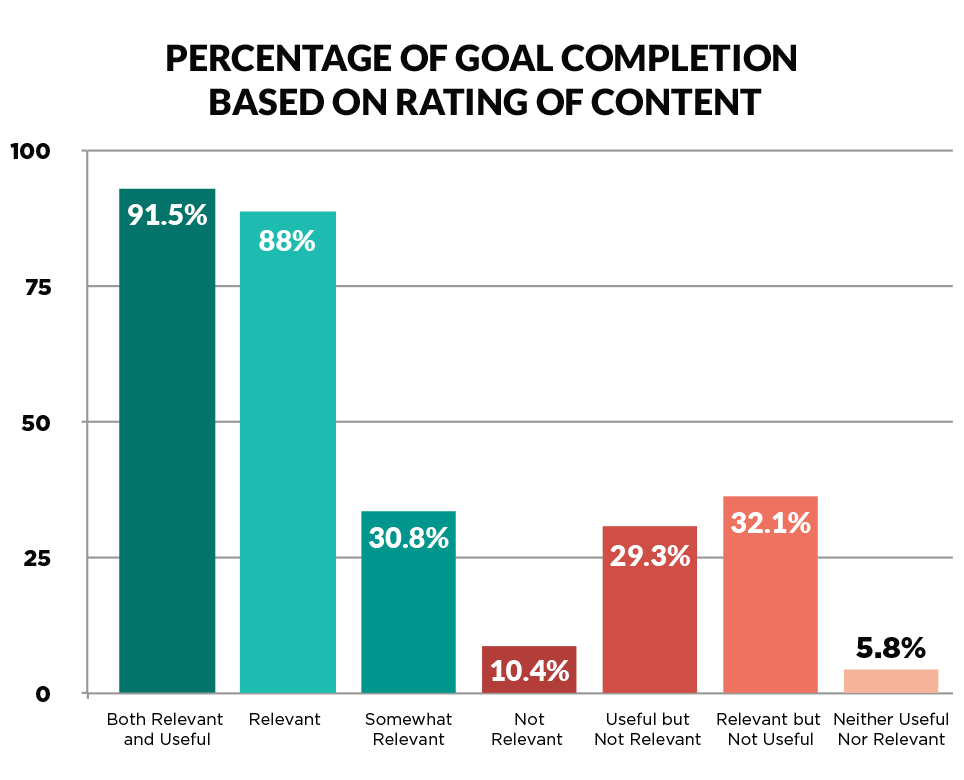
Even more pronounced is the effect of the two dimensions together. According to our data, users who found content to be both relevant and useful said the content helped them accomplish their goal 91.5% of the time. That’s more than 15 times as often as users who found the content neither useful nor relevant.
Insight 2: Content Must Be Both Useful and Relevant to Be Effective
Before we explain this insight, let’s clarify the content effectiveness measurement here. ContentWRX applies an algorithm to generate a score of 1-100 to represent content effectiveness. We call it the ContentWRX score.
We conducted a special analysis to understand the impact of content relevance and usefulness on overall effectiveness. Data from users who indicated the content was either relevant or useful resulted in a ContentWRX score 47% lower than users who indicated it was both. Users who indicated content was neither relevant nor useful rated the content 75.9% less effective than users who indicated it was both.
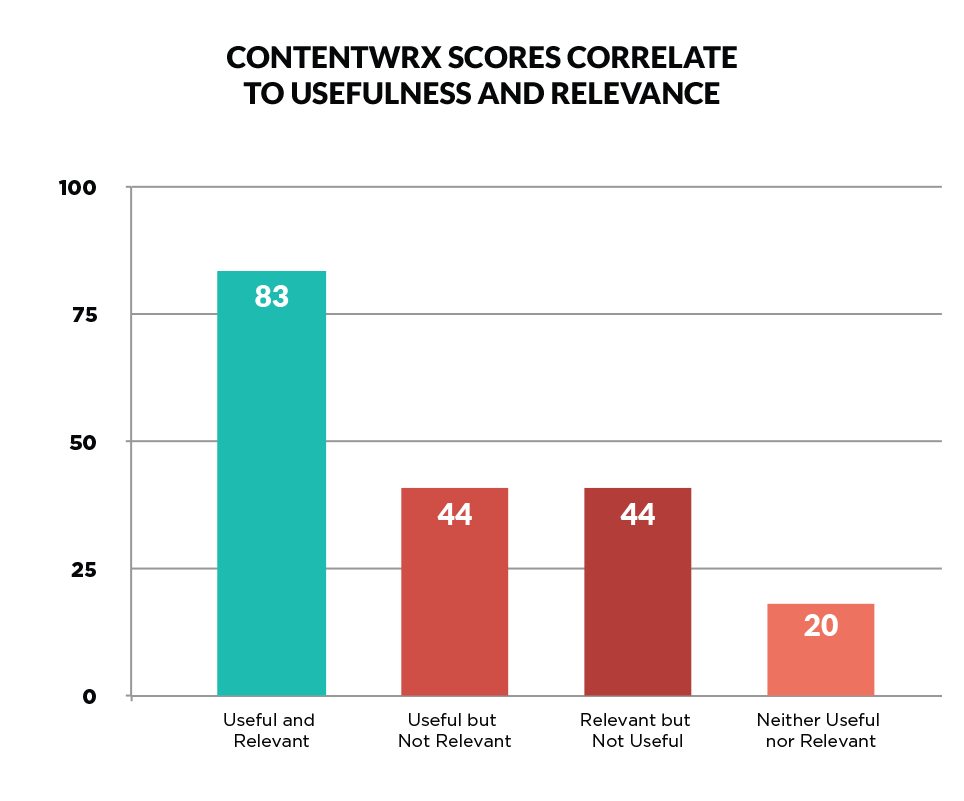
If your content is not both relevant and useful, it will not be effective.
Insight 3: Lack of Content Detail and Sophistication Drives Low Content Usefulness and Relevance
The number one reason users gave for perceiving content as not useful was that the content seemed too basic, general, or vague. In fact, users were more than 8.5 times as likely to indicate this was an issue than content being too detailed or advanced.
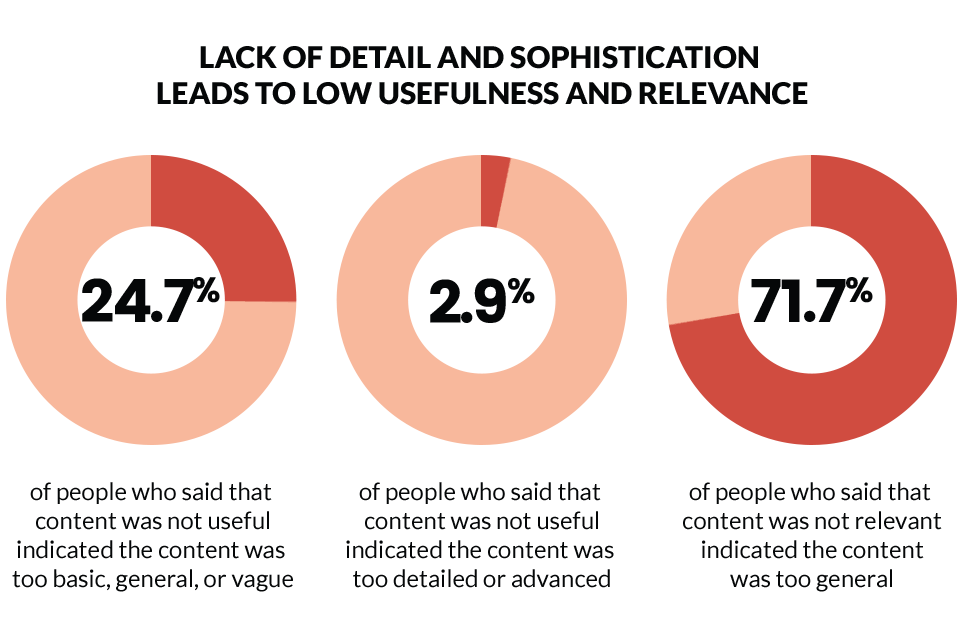
Additionally, if users feel that content is not useful because it is too basic, general, or vague, they will also feel that it is not relevant. 71.7% of these users also indicated that the content they used was irrelevant to their needs.
So how can you help customers perceive your content as relevant and useful to their goals? The answer to that question could be its own book, but we’ll start by taking a look at a couple of quick ways to address your users’ needs.
4 Ways to Improve Your Content’s Relevance and Usefulness
The approaches outlined below are proven to help increase your audience’s perceptions of your content’s relevance and usefulness, but they require ongoing work to keep in place. So let’s jump in…
1. Produce Detailed Content Geared Toward Specific Needs
With the size of the digital universe currently doubling every two years, there’s no shortage of content out there for your audience to choose from. Your customers or users seek content that matches both their level of expertise and specific needs. Among users who said that content was too basic, general, or vague, 43.2% indicated the content seemed geared for someone with different needs. This is often someone who is newer or knows less about a topic.
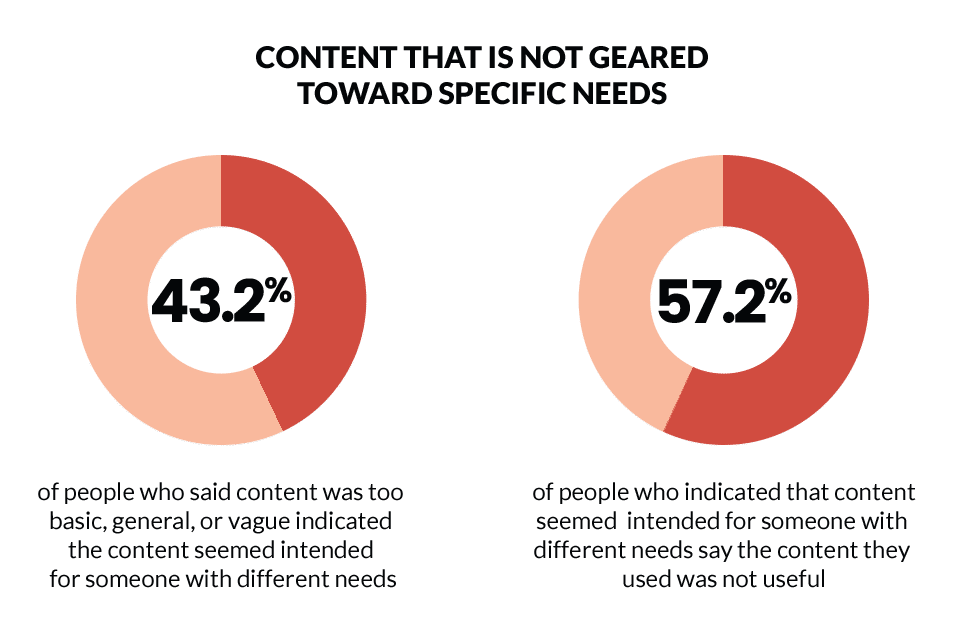
To avoid this gap, you need to know your audience and their specific needs. Then you need to produce useful content that is advanced enough to meet those needs. Now, most websites will need to produce content for audiences with various levels of expertise. By identifying what those different levels of expertise are and layering your content to meet them, you can efficiently meet the needs of multiple audiences. What’s more, you can start to personalize their content experiences by suggesting or guiding your audiences to the most relevant content.
Let’s look at another tip for improving information relevance.
2. Assure Your Users of Your Content’s Completeness
Another common reason people feel that content is not useful is that the content feels incomplete. 19.2% of users who deemed content not useful made this complaint. If users do not trust your content’s completeness they are also unlikely to feel that it is relevant to their needs. 74.2% of users who felt that content was incomplete also felt the content was irrelevant.
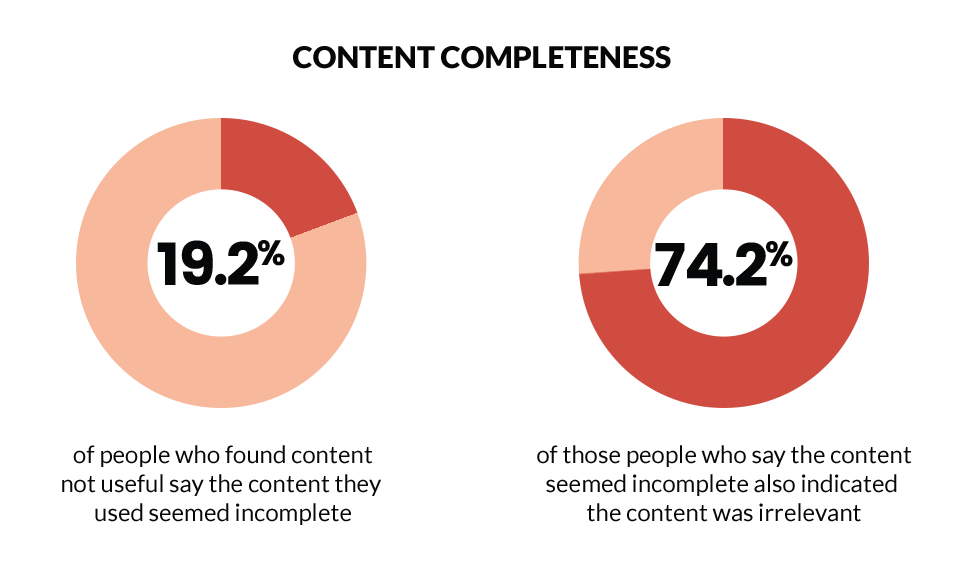
Fortunately, there are many ways to assure users of your content’s completeness. For one example, we can look at The Home Depot’s “How To” guides:

In every step of the guide, The Home Depot includes a picture that illustrates the step. This allows the user to actually see the project being completed, which reassures them that this guide is useful. Let’s look at another example from American Cancer Society:
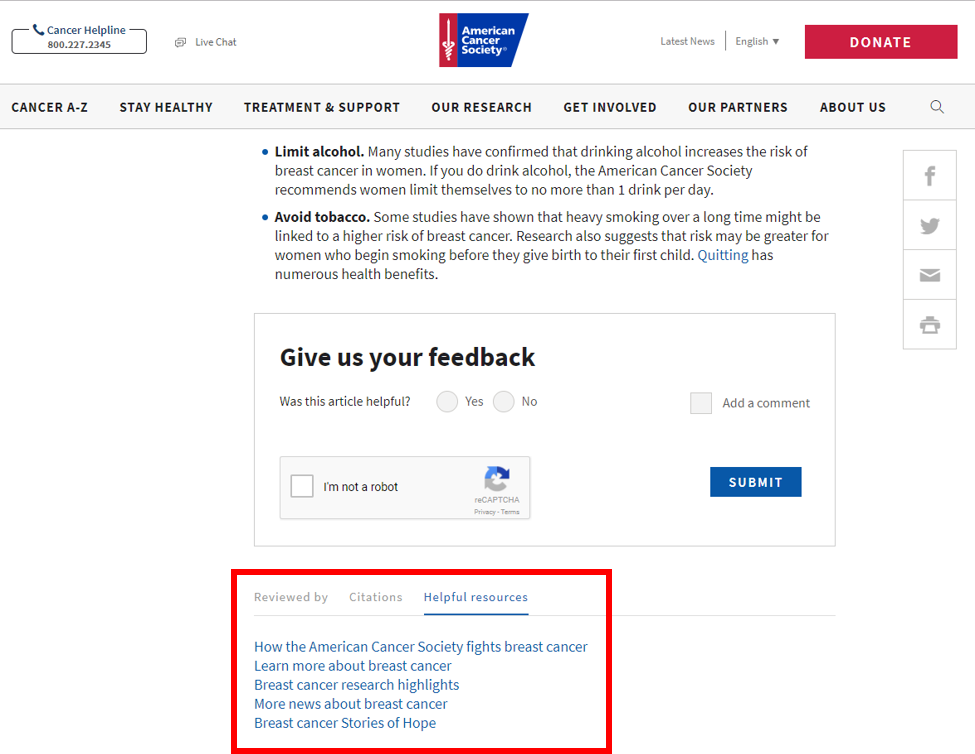
At the end of each article, American Cancer Society provides both a list of citations and “helpful resources.” This helps reassure users that the research that has gone into this content was thorough, and that if they need more information they can find it.
Let’s move on to another way to improve your content’s relevance and usefulness.
3. Give Your Audience the Chance to Compare Their Options
11.3% of users who did not feel as if content was useful said that the content did not help them compare their options. This also affected their perceptions of the content’s relevance. 67.4% of these users indicated that the content also seemed irrelevant to their needs. 50% of those users indicated the content seemed geared for someone with different needs.
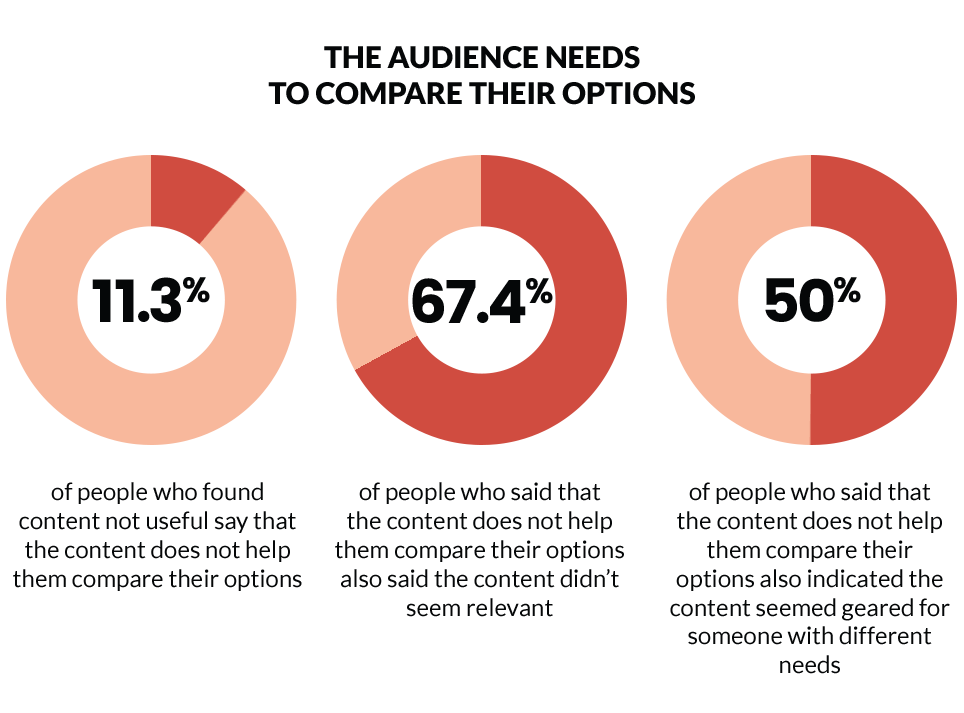
For an example of how to address this issue, let’s look at a before and after comparison of Equifax’s product selection tool.
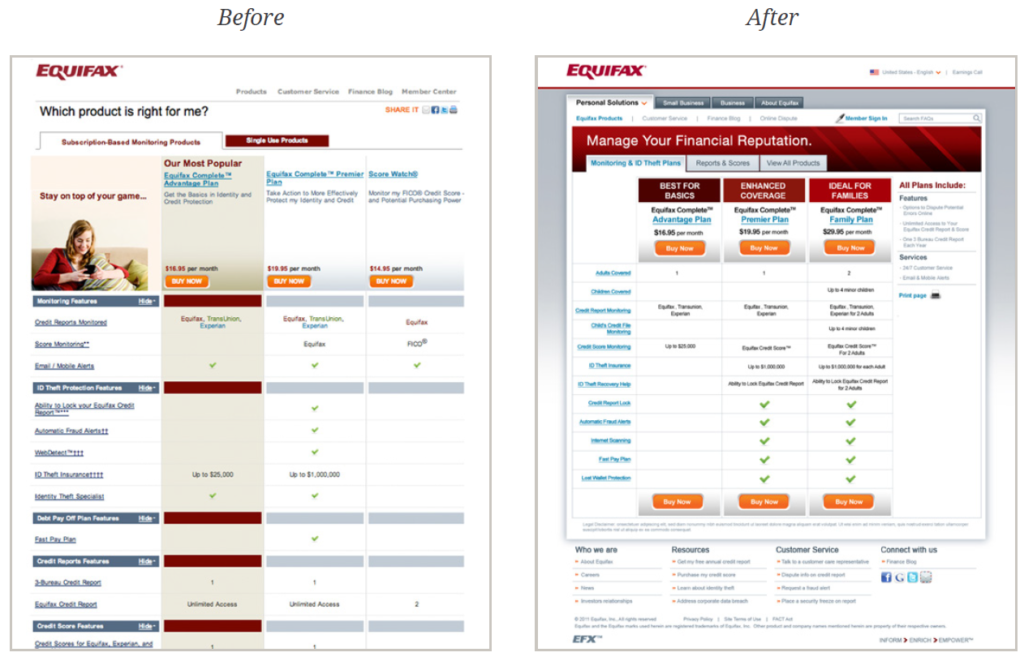
In the before, Equifax’s products were not suggested for specific needs. The points of comparison for each product used Equifax terminology that required further explanation for the user to understand, such as “WebDetect.” The updated product selection tool indicates which product makes the most sense for specific user types, such as families. It also simplifies the points of comparison, condensing a long list to easily understood points of coverage.
By placing the user’s needs at the forefront of design and providing easy to understand points of comparison, Equifax was able to underline the content’s relevance. This also worked to make it more useful for their audience.
With that, let’s look at one more way to improve information relevance and usefulness.
4. Ensure Your Content Is Timely
Another reason users question information relevance is when it is not timely. Nearly 10% of users who said the content was irrelevant to them indicated the content was out of date, with 70.4% additionally saying the content was not useful. Of these users, 20.2% said that it was incomplete. Users expect the most up-to-date information to help them reach their goals, so consider ways to reassure them that it is up-to-date.

For an example of how to assure your users of your content’s timeliness, let’s take a look at the lake levels over at TVA (Tennessee Valley Authority). Visitors to the Recreation section of TVA’s website often use lake level information to plan boating or fishing trips. Here, TVA provides observed lake levels at very specific times, updating the content every hour. TVA also offers 48 hours of previous data to help users understand fluctuations in the water release schedule. This gives visitors the most complete and up-to-date information available to plan their trips.
Focus on Relevance and Usefulness to Improve Content Effectiveness
If relevance and usefulness to your users hasn’t been at the heart of your content strategy, you are at risk of losing their faith in your organization’s ability to help them meet their goals. The good news? It’s never too late to start focusing your content’s usefulness around audience relevance. And, the advances in artificial intelligence, when implemented well, can accelerate your progress.







Comments
Comments are closed.
We invite you to share your perspective in a constructive way. To comment, please sign in or register. Our moderating team will review all comments and may edit them for clarity. Our team also may delete comments that are off-topic or disrespectful. All postings become the property of
Content Science Review.